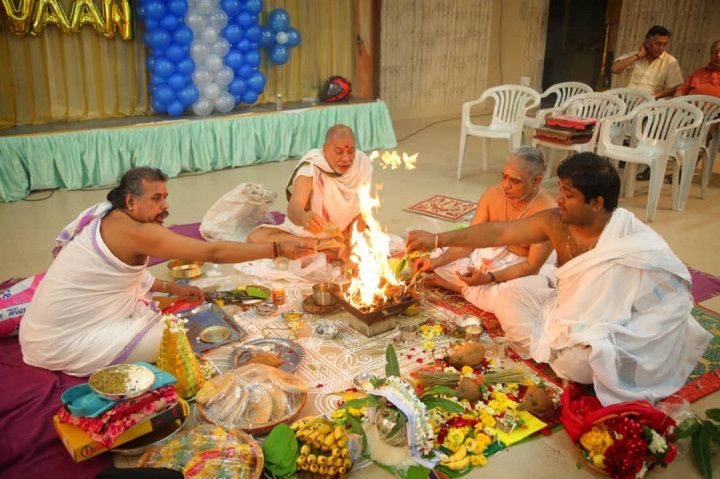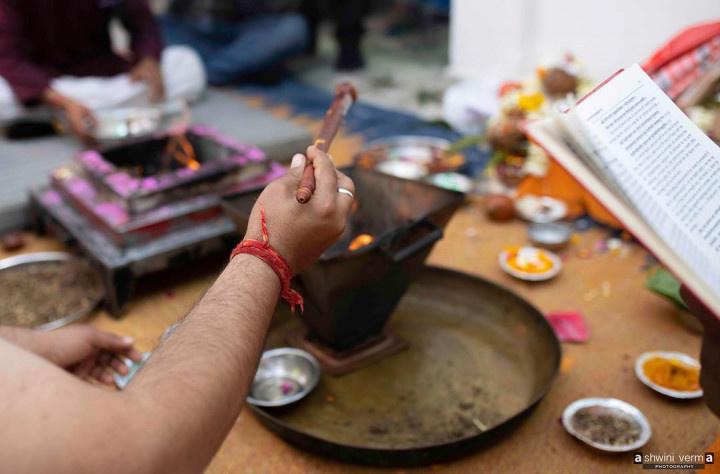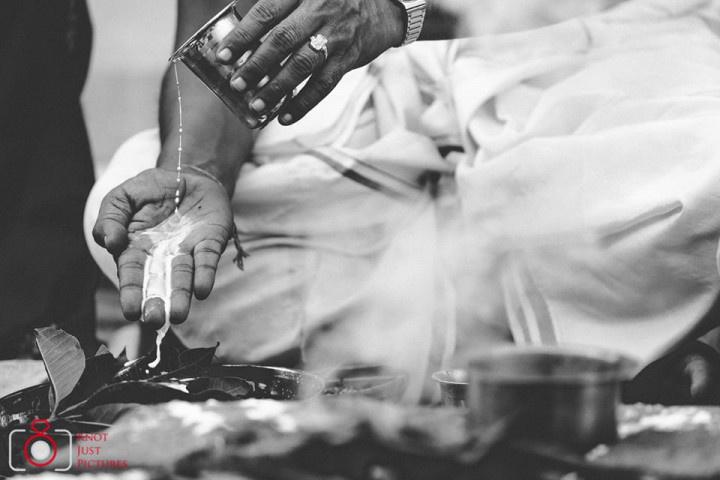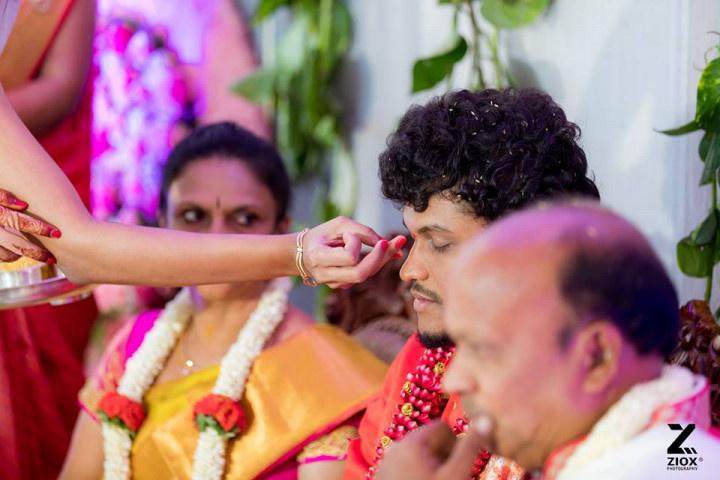what to wear as a guest to sacred thread ceremony
The Significance of the Sacred Thread Ceremony Before Marriage
Want to learn nearly the sacred thread ceremony? Nosotros share with you its significance and more than in item.


Prototype Courtesy: Pic Craft
Thread ceremony or Upanayana as its known worldwide is a sacred rite of passage ritual for all Hindus. The sacred thread or Janeu is worn by Hindu boys post-obit a series of rituals and steps. It is performed when a Hindu boy is growing upward. Originally, information technology marked the point when Hindu boys started their formal educational activity. However, little do people know that at that place is the provision of conducting this ritual much afterward when a man plans to enter into marriage.
one. What is the meaning of thread anniversary?

Image Courtesy: Ashwini Verma Photography
Normally, castes like Brahmins, Kshatriyas and Vaishyas hold a threading ceremony for the groom before his wedding. The ceremony is also called Yagnopavitra. During this anniversary, the groom is offered iii strands of sacred thread, each representing iii vows, namely - the vow to respect noesis, the vow to his parents, and the promise to respect the lodge in which he lives.
2. When is Thread Ceremony performed?

Traditionally, the ritual of Upanayanam or sacred thread ceremony is performed when a Hindu boy attains seven years of historic period. Upanayana ritual symbolises the end of an era in a boy's life and the initiation into another. With this ceremony, a boy leaves his childhood, proceeds to become a human being, and follows the path of getting knowledge. But, in modern times, this ritual can exist conducted when a man gets married. For Hindu men to get married, the thread ceremony is a prerequisite. Therefore, earlier a Hindu groom weds, he has to undergo Upanayana. Normally, this ritual takes identify a few days earlier the wedding.
iii. How is thread anniversary performed in the North?

Upanayana is performed in a serial of steps that are listed below:
A) The worship of Lord Ganesha
The parents of the groom perform the puja for Lord Ganesha a twenty-four hours earlier the ceremony. In a Brahmin family, the groom and his mother eat food from the aforementioned leaf plate. This is washed on the day of the Upanayana.
B) The wearing of the sacred thread
The groom is then made to wearable the sacred thread or Yajnopavita past the Acharya or the head priest. This is washed amidst chanting of Vedic mantras.
C) The consequence of vows
once the groom has circumambulated the fire, the priest bug him a prepare of vows or promises that he must keep throughout his life. These are Achamana or the sipping of water forth with mantras earlier any ritual, controlling speech, abstaining from day naps.
D) Offering fuel sticks to the sacred fire
Now, the groom offers fuel sticks to the already prepared sacred fire accompanied by chanting of Vedic mantras.
Eastward) Begging for food
This is the last footstep in the Upanayana anniversary. The groom begs for food from his mother and other sometime ladies of his household. The food received has to be offered to the guru first.
4. How is thread ceremony performed in the South?
In a Southward Indian hymeneals, the thread ceremony is known as Vrutham. Information technology is an important ritual for a groom. Vrutham takes place at the house of the groom. Information technology is conducted early on in the morning on the day prior to the wedding. This ceremony marks the cease of the Brahmacharya stage of the groom and the start of a new stage - Grihastha. It is only subsequently this thread ceremony that a man can get married. The groom first asks for his father'due south permission to proceed to the next phase of his life. The father is considered as the guru or Acharya. A puja is conducted when a thread is tied around the groom's wrist. This thread is smeared with turmeric and is considered sacred. The anniversary is likewise conducted for the bride at her identify. This is washed to protect the groom and his bride from evil spirits.
5. The Symbolic Meaning of the Three Sacred Threads
The sacred threads are besides known as Janeu in Bharat. These strands are not ordinary strands of threads. Rather, these have a deeper symbolical pregnant associated with them. In that location are typically three debts that a human being can never forget in his lifetime. These are namely:
- Man's debt to his guru or teacher.
- Man's debt to his parents.
- Man'southward debt to the scholars.
These strands also symbolise three Indian goddesses - Parvati, Saraswati and Lakshmi. During the sacred thread ceremony, the groom is made to wear these strands that signify the importance of three virtues that volition govern him for the balance of his life. These are the forcefulness (Parvati), knowledge (Saraswati) and wealth (Lakshmi). It is believed that a man becomes complete merely when he has the blessings of these supreme goddesses. Hinduism has many sacred rituals of which the Thread Ceremony is considered one of the most important rites of passage rituals in a Hindu man's life. It is significant in every Hindu family.
What are your thoughts about the thread anniversary? Permit us know through comments.
Source: https://www.weddingwire.in/wedding-tips/thread-ceremony--c2985
0 Response to "what to wear as a guest to sacred thread ceremony"
Enviar um comentário